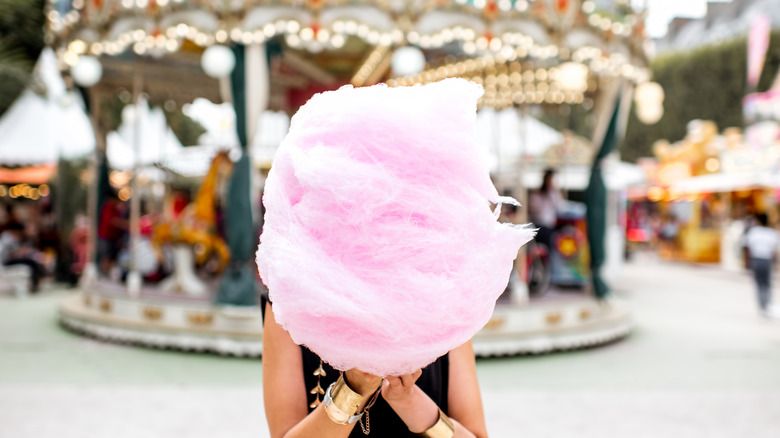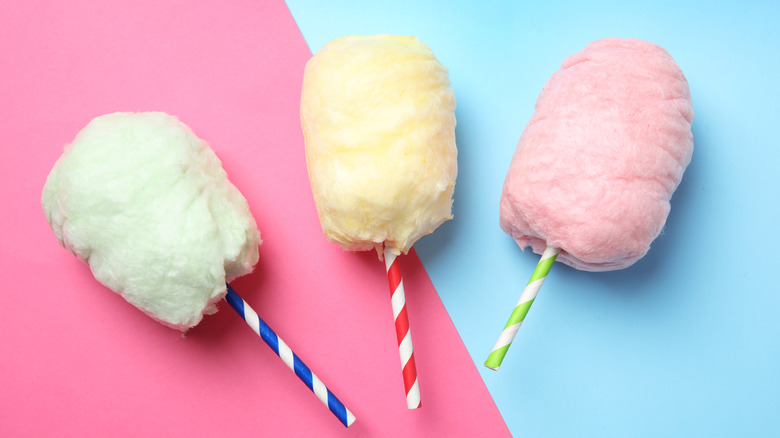Why The Origin Of Cotton Candy Is So Surprising
Giant, fluffy puffs of pastel-colored cotton candy are synonymous with fairs, carnivals, festivals, and even baseball games. The treat, made with spun sugar, is made around the world and loved by children and adults alike. Of course, the sweet, cloud-shaped fare doesn't offer many nutrients. But perhaps surprising to some, cotton candy is light in calories, clocking in at 105 calories per 1 ounce serving, according to National Geographic. It's also a fat-free, sodium-free, and cholesterol-free food, likely because it's literally made from pure sugar and air.
According to "Sweets: A History of Candy" by Tim Richardson, the world's first international confectionery historian, it is believed that cotton candy was first enjoyed in Italy during the 15th century, where chefs formed magnificent sculptures from sticky, flexible spun sugar (via Candy History). You may assume that cotton candy was solely invented by a sugar-loving confectioner. However, it turns out that the opposite is true.
Cotton candy was co-invented by a dentist
Modern cotton candy was invented in 1897 by two men with two very different careers. According to National Geographic, it was created by dentist William Morrison and candy maker John C. Wharton. That's right. A dentist is partly to thank for the fibrous pink indulgence. The duo developed and patented the first electric candy machine, which was essentially a perforated metal bowl with a spinning head filled with sugar.
Morrison and Wharton showcased their innovation at the St. Louis World's Fair of 1904, which attracted around 20 million people over seven months. Cotton candy proved to be a huge hit. While they were in attendance, the men sold more than 68,000 servings of cotton candy to curious fairgoers. Initially marketed as "fairy floss," their product was handed out to children and adults alike. Then, in the 1920s, the term "cotton candy" was coined by another dentist named Josef Lascaux, who sold the treat to his patients. Over the years, cotton candy has become its own flavor and has inspired various foods and beverages, including grapes, cocktails, ice cream, bubble gum, soda, and frappucinos.

